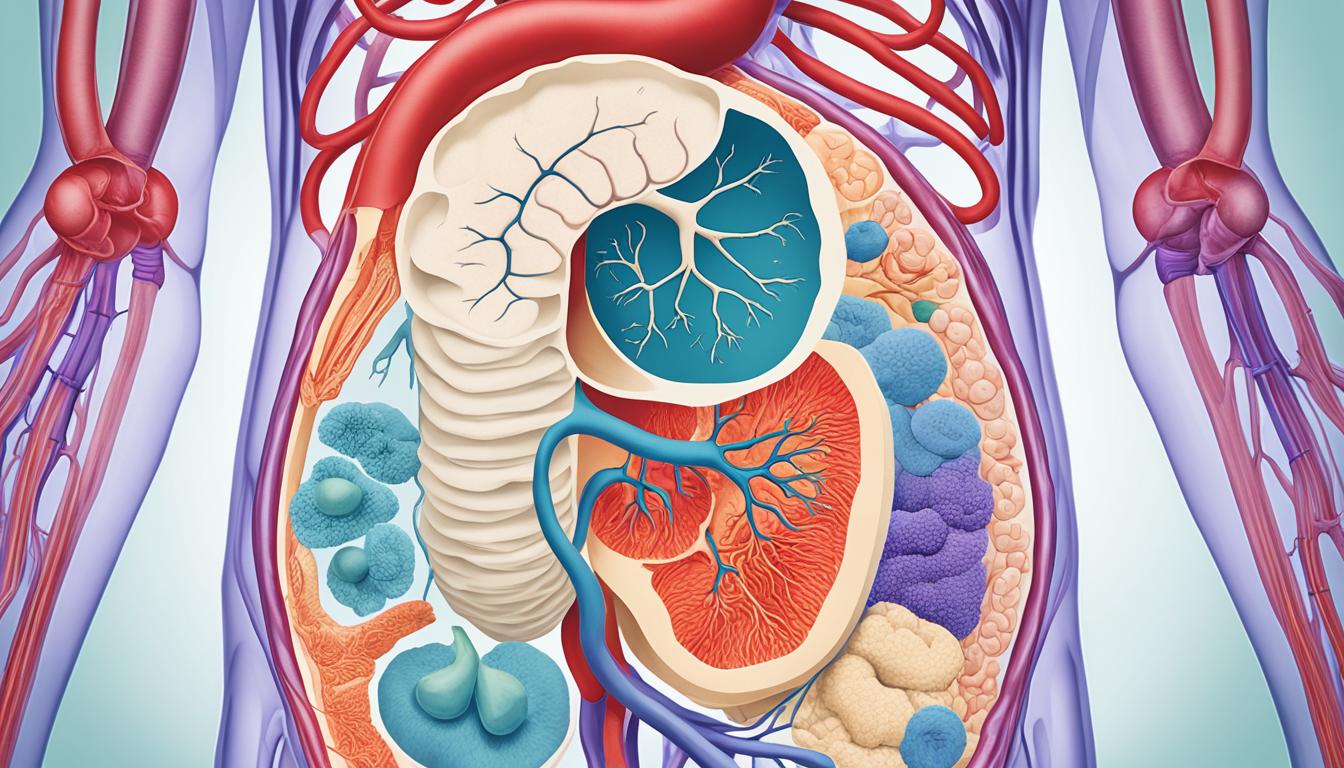IBD stands for inflammatory bowel disease. It’s a long-term health issue that affects the digestive system. Two types are known: Crohn’s disease and ulcerative colitis. They share symptoms like stomach pain, diarrhea, bleeding, weight loss, and tiredness. The exact causes are not completely clear. Many factors such as genetics, surroundings, and the immune system may play a role.
At the moment, there isn’t a cure for IBD. Yet, there are ways to help control its effects and make life better. Stem cell therapy is one of the hopeful treatments. It focuses on lessening gut inflammation and repairing tissues.
Key Takeaways:
- IBD stands for inflammatory bowel disease and includes Crohn’s disease and ulcerative colitis.
- Its symptoms are stomach pain, diarrhea, bleeding, losing weight, and feeling weak.
- The reasons behind IBD are not fully understood, but genes, surroundings, and the immune system seem involved.
- There is no known cure yet for IBD, but treatments can make symptoms better.
- Stem cell therapy is a potential way to decrease inflammation and help heal the gut.
The Global Burden of IBD and Diagnosis
Inflammatory bowel disease (IBD) is becoming more common globally. It includes Crohn’s disease and ulcerative colitis. The number of people with IBD is projected to grow by 2025. This will challenge our healthcare and the people it serves.
Diagnosing IBD requires a thorough, team-based approach. Doctors use different tests to confirm the disease and decide on the best treatment. They look at:
- Medical history: They ask about your symptoms, family’s health, and any risks you might have had.
- Physical examination: Doctors check your body for signs of IBD, especially around your stomach area.
- Laboratory tests: Certain blood markers, like CRP and ESR, can show if there is inflammation supporting an IBD diagnosis.
- Imaging studies: Tests like endoscopy and colonoscopy let doctors see inside your gut. This helps them confirm IBD and take samples for further checks.
Combining these tests lets healthcare teams pinpoint IBD accurately, including the type and how severe it is. Then, they can plan the right treatment for you.
| Year | IBD Prevalence (per 100,000) | IBD Incidence (per 100,000) |
|---|---|---|
| 1990 | 105.0 | 6.3 |
| 2000 | 138.2 | 7.4 |
| 2010 | 184.5 | 8.6 |
| 2020 | 222.9 | 10.2 |
The table above presents how IBD’s presence and new cases have grown from 1990 to 2020. Both the number of people who have IBD and newly diagnosed cases are on the rise. This growth shows the increasing challenge of coping with IBD globally.
As IBD’s influence grows, so does the need to educate people, improve screening, and foster better ways to treat it. This aims to lessen its impact on both those affected and the healthcare systems caring for them.
Stem Cell Therapy for IBD and its Potential Benefits
Stem cell therapy, especially MSCs, is showing great promise in treating IBD. These cells can help the immune system, lower inflammation, and heal gut tissues. This makes them very valuable for people with IBD.
In studies, MSC therapy has shown to be safe and effective. It improves symptoms, lowers inflammation, and helps the gut heal. Many reports agree on the benefits of this therapy.
Using stem cells, MSC therapy could change how we treat IBD. With more studies, it might open new ways to manage IBD and boost life quality for patients.

